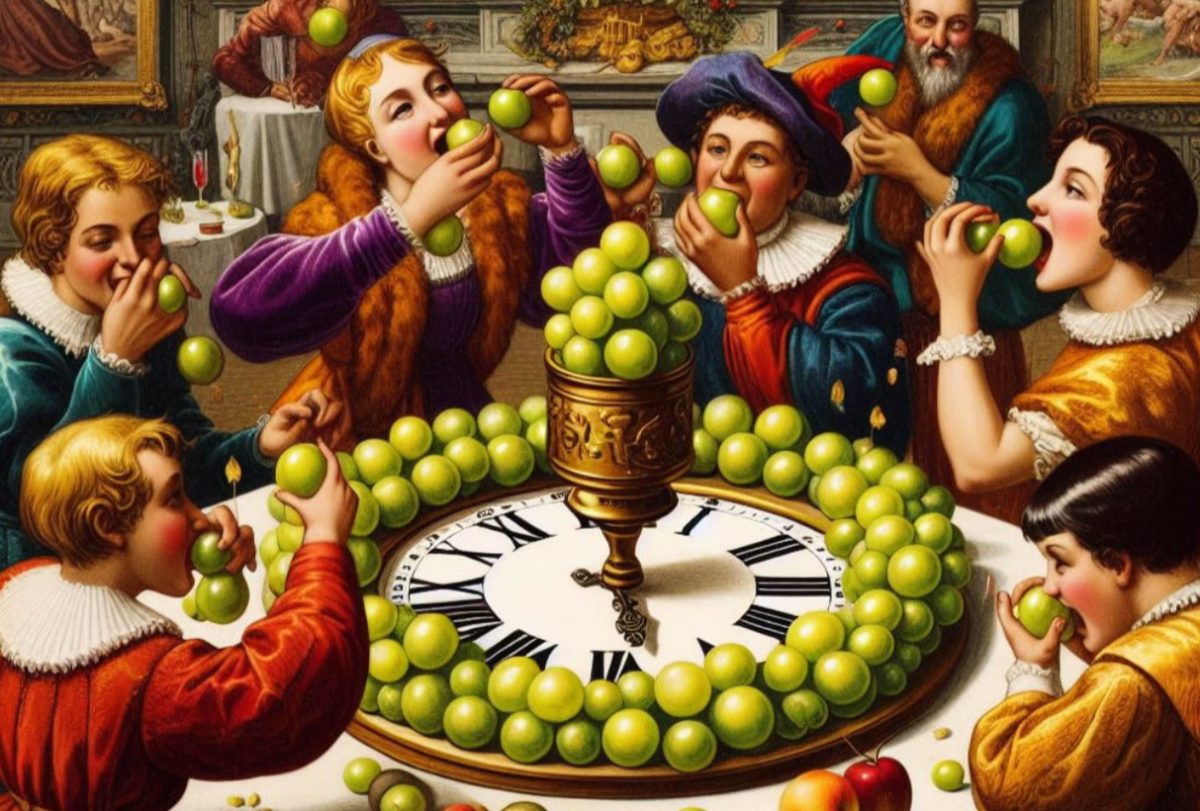The tradition of celebrating New Year’s Eve is widely known, characterized by ringing in the new year, and welcoming new beginnings, hopes, and chances. But why we host New Year’s Eve celebrations and the history behind it, is not widely known.
There is actually a long standing, and well thought out tradition behind New Year’s Eve. The belief that what someone is doing on the first day of the new year foretells what that year holds for them, creating a desire to be with friends and family we wish to hold close in the following year. One such example is the first Rose Bowl game played in Pasadena, California, on January 1, 1902. It created a tradition of college football games dominating American television on New Year’s Day. The Tournament of Roses parade also takes place annually, featuring floats made of live flowers, as well as the Mummers’ Parade, taking place in Philadelphia with colorful costumes and music.
But celebrations like these began long before football and float festivals. The first festival dates back to 2000 BCE in Mesopotamia, beginning its origin with Babylonians with the New Moon after the Spring Equinox, and in Assyria with the New Moon nearest the Autumn Equinox. For the Egyptians, Phoenicians, and Persians, the year began with the Autumn Equinox and for early Greeks, it began with the Winter Solstice. Each culture created their own New Year’s Eve traditions at the time, many which have continued to branch out into each continent, as we see bits of respective cultures all over the world today.
As various cultures celebrated the new year differently, symbolic foods also became traditional. Various meals and desserts consumed for the new year hark from around the world, including Europeans’ tradition of eating cabbage or other greens that foretell prosperity, the American South’s tradition of black-eyed peas for good luck, Asian foods including dumplings, noodles, and rice cakes, symbolizing long life, happiness, wealth, and good fortune, and this year’s special feature, of eating twelve grapes under the table at midnight.
Food is not the only tradition we practice in hopes of bringing in a happy and promising year. Symbols, rituals, and acts of love are common themes that are seen frequently throughout history.
Ball Drop
Originating in 1830s England, the ball drop marks the time where the still-operational Time Ball sits on Flamsteed House in London, marking the 13th hour of each afternoon. America’s infamous NYC ball drop, however, was founded in 1907, originally built by Jacob Starr. Coming to a total of seven hundred pounds, five feet in diameter, and decorated brightly with one hundred 25-watt bulbs, the original ball was enormous. Since the original creation six more New Year’s Eve Balls have been created for the Big Apple, each brighter and larger than its predecessor. Currently, the New Year’s Eve Ball weighs 11,785 pounds, holding 2,688 individual Waterford crystals, and more than 32,000 LED lights, twelve feet across, and seventeen times heavier than the original ball!
New Years Kiss
The tradition of a New Year’s Kiss originates from German folklore when immigrants gathered over food and drinks and spread kisses and hugs. The New Year’s kiss also carries the superstition that sharing a kiss with your significant other can strengthen your relationship, and having a new kiss can manifest lack of loneliness.
Wear White
The common tradition of wearing white originates from the Afro-Brazilian religions, Candomblé and Umbanda, and their tradition of honoring the deity of Yemanjá on December 31. This tradition is now associated with purity, fresh and new beginnings, and a clean slate for the new year.
Broken Plates
In Danish a tradition, friends and family will lovingly break plates on the doors of their loved ones, spreading the luck of the new year, and warding off negativity.
As cultures from all over the world meld into our communities today, we are able to incorporate historical traditions into our family’s new years. Take some time during the next New Year to recognize and learn about the cultures you’ve brought into your traditions today!







![SPINNING INTO FUN The iconic Ferris wheel at the Irvine Spectrum stands glimmering in the sun, drawing visitors from all over Orange County. A favorite destination for Mater Dei students, the Spectrum offers endless opportunities for shopping, dining, and entertainment. “[It’s] a lot of fun,” sophomore Matthew Delaney said. “[And] everything is close by, so it’s a great way to pass the hours.” Photo by](https://thescarletscroll.com/wp-content/uploads/2025/02/IMG_1117.jpeg)